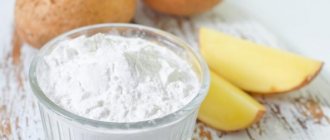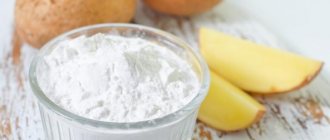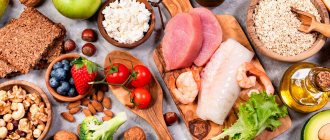What are the benefits of fats for the human body?
Not only excess, but also lack of fat can cause serious health problems. You must consume fat every day to keep your body functions in order. The benefits of fats for the body are as follows:
- They supply the body with essential fatty acids omega-3 and omega-6, which it cannot produce on its own. These fatty acids play an important role in maintaining healthy heart and brain cells. In addition, they fight inflammation, influence cell signaling and many other cellular functions, as well as human mood and behavior.
- Fat helps absorb certain nutrients, such as fat-soluble vitamins (A, D, E, and K) and antioxidants (such as lycopene and beta-carotene). Meanwhile, vitamin A is necessary for good vision, vitamin D for calcium absorption, healthy bones and teeth, E for protecting cells from free radicals and beautiful skin, and K for normal blood clotting.
- Fats are a source of energy and the main way of storing it. 1 gram of fat contains 9 calories, while carbohydrates and protein contain only 4, and alcohol contains 7. And although carbohydrates are the main source of energy for the body, our body uses fat as a “reserve fuel” when there are not enough carbohydrates.
- Adipose tissue insulates the body and helps maintain its normal temperature. Other fat cells surround vital organs and protect them from external influences. At the same time, adipose tissue is not always visible and is noticeable only when you are overweight.
- Finally, fat plays an important role in the maintenance of all cells in the body. Cell membranes themselves are made from phospholipids, which means they are also fatty. Many tissues in the human body are lipid (i.e., fatty), including our brain and the fatty membrane that insulates the nervous system.
Simply put, all the fat we consume:
- or becomes part of the tissues and organs in our bodies,
- or used as energy,
- or stored in adipose tissue.
Therefore, even if you are losing weight, dietary sources of fat should definitely be part of your diet.
By the way, how “dangerous” are fats for weight loss?
People gain weight when they consume more calories (from fat, carbohydrates, protein and alcohol) than they burn. Therefore, it is usually not so much fatty foods that are to blame for excess weight, but overeating in general + low physical activity, as well as sugar. This is what actually causes the accumulation of fat in the body. High blood sugar causes the pancreas to release insulin, which causes fat cells to take up excess glucose and turn it into more fat on your sides.
Yes, as we said above, fat contains more calories per gram than protein, carbs, and even alcohol, but it also makes food more flavorful and filling. And this allows you to quickly feel satisfied with food without overeating. A weight loss diet that includes some fats will not only be healthier, but will also be more successful in the long run because you will be less likely to relapse.
Another thing is that fat often comes to us from such tempting sources as French fries, hamburgers, cakes, thick steaks, etc. Perhaps that is why, according to statistics, the average people's diet contains not 20-35 recommended% fat, but 35 -40%. As a result, all the benefits of fats for the body begin to turn into harm. Exceeding the consumption of fatty foods often leads to the following problems:
- Excess weight.
- High cholesterol levels, which in turn increases the risk of developing coronary heart disease.
- The likelihood of developing type 2 diabetes.
- Increased risk of heart disease and certain types of cancer (particularly breast and colon cancer).
To avoid this, it is recommended that women eat no more than 70 grams of fat per day, and men no more than 95 grams. To get a more individual figure, base your calorie goal on your diet. So, with a goal of consuming 1800 Kcal per day, the amount of fat consumed should be 360-630 Kcal or 40-70 g. Some nutritionists also recommend following a simple rule: eat 1 g of fat per 1 kg of body weight per day.
So, what fats are best to choose for weight loss and overall health?
Which fats are most beneficial for the body?
Choosing the right sources of fat for your diet is one of the best ways to reduce your risk of heart disease. For this purpose (and maintaining overall health), the most beneficial are unsaturated fatty acids. Here is their list:
- polyunsaturated fats omega-3 and omega-6;
- monounsaturated fats omega-7 and omega-9.
Polyunsaturated fats
supply the body with essential fatty acids, help reduce bad cholesterol and triglyceride levels, support healthy bones, hair, skin, immunity and reproductive function.
Omega 3
fatty acids help strengthen the heart, protect blood vessels in the brain, support the immune system and improve mood. Among the healthy omega-3 fats, the most important for humans are ALA (alpha-linolenic acid), DHA (docosahexaenoic acid) and EPA (eicosapentaenoic acid). Alpha-linolenic acid has a beneficial effect on the heart and enters the body from plant sources (flax seeds, hemp seeds, chia, etc.). The other two acids can be obtained primarily from fatty fish (salmon, trout, herring, mackerel) and other seafood. It is believed that fish contains the most effective type of omega-3 for the prevention of cardiovascular diseases. The American Heart Association recommends eating 2 servings of oily fish per week.
Read on Forest Fairy: The best vitamins for beautiful skin
Omega 6 fatty acids
play an important role in brain function, normal growth and development, skin and eye health. Omega-6 linoleic acid is used by our bodies to create cell membranes. However, evolutionary scientists believe that modern humans consume too much omega-6 and not enough omega-3. In a hunter-gatherer diet, the ratio of these fats would be approximately 1:1, whereas the current average is 16:1. Excessive amounts of omega-6 in the diet can lead to inflammation, which is associated with heart disease. In addition, these fatty acids often come to us from refined foods rather than from whole foods. Omega 6 can be found in meat, eggs, corn, sunflower, soybean and safflower oils.
Other healthy fats, monounsaturated fatty acids
, also reduce the risk of heart disease, help lower bad LDL cholesterol, increase good HDL cholesterol, protect arteries from plaque buildup, and are often a good source of the antioxidant vitamin E. They are found in high quantities in nuts, avocados, and olives.
The discovery that monounsaturated fats are beneficial for the body came from the Seven Countries Study in the 1960s. It showed that people in Greece and other parts of the Mediterranean region have relatively low rates of heart disease despite eating a high-fat diet. It is noteworthy that the main fat in their diet was not saturated animal fat, but olive oil, which is a rich source of monounsaturated fat. This discovery sparked a surge of interest in olive oil and the Mediterranean diet in general as a healthy eating style.
Although there is currently no recommended daily intake of monounsaturated fats, nutritionists recommend consuming them along with polyunsaturated fats to replace saturated and trans fats in your diet.
A balanced diet is the key to good health
A healthy lifestyle includes adequate physical activity, whole foods as the basis of the diet, moderate portion sizes and a variety of foods. The Mediterranean diet, based on the consumption of fruits, vegetables, whole grains, fish and foods made with vegetables and vegetable oils, is associated with a lower risk of heart attacks and cardiovascular disease. Diets rich in whole foods are often more effective in preventing cardiovascular disease than restrictive diets low in fat and cholesterol.
What do you think of the latest evidence on saturated fat? We'd love to hear what you think about it... The comment form is below.
Saturated and unsaturated fats: difference, ratio in the diet
As you probably know, the fat we eat comes in two main forms: unsaturated and saturated. Both types provide approximately the same amount of calories. Therefore, to lose weight, it doesn’t matter what fats you eat. Too many calories? This means that you will gain weight, regardless of whether healthy fatty acids enter your body or not.
What's the difference between saturated and unsaturated fats, and why are some better than others?
The term “saturated” refers to the number of hydrogen atoms that surround each carbon atom in fat. The more hydrogen, the more saturated the fat. In reality, this is expressed as follows: saturated fats become solid
(remember how, after frying meat, bacon or lard, melted animal fat in a frying pan gradually solidifies), while unsaturated fat remains
fluid
(like most vegetable oils).
The ability of saturated fats to harden is widely used in the production of confectionery and bakery products. Composed of butter, palm oil and milk fat, they are found in all kinds of desserts, cakes, pastries and various pastries. Other sources of saturated fat include meats, cheeses and other whole milk products, and coconut oil.
Is saturated fat harmful to human health?
In fact, research has not yet collected enough evidence that saturated fat increases the risk of heart disease. There is incomplete evidence that excessive consumption of these hardening fats contributes to increased total cholesterol, plaque buildup in the arteries, and an increased risk of colon and prostate cancer. 2 large studies have shown that replacing saturated fat with polyunsaturated fats and high-fiber carbohydrates actually reduces the risk of heart disease (while a diet high in processed carbohydrates does the opposite).
However, humans have evolved to consume unprocessed forms of saturated fat (game meat, whole milk, eggs, coconuts) along with fish and plant foods. Therefore, some of them should also be present in our diet, at least for:
- reducing levels of lipoprotein (a), high levels of which increase the risk of heart disease;
- cleansing the liver of fat (saturated fat stimulates liver cells to release it);
- brain health (most of the brain and myelin sheath is made of saturated fat);
- proper functioning of the immune system (saturated fats such as myristic and lauric acids play an important role in maintaining immunity and are even found in mothers' breast milk).
The correct ratio of unsaturated and saturated fats in the diet
Due to the availability of animal products and the low prevalence of whole plant foods on the market today, people have become consuming too much saturated fat in relation to unsaturated fat. And what's even worse is to combine them with processed carbohydrates, which usually leads to health problems.
If total fat in a person's diet should be 20-35% of all calories, then saturated fat should not be more than 10% (about 20 grams with a goal of 1800 Kcal/day). This is the ratio recommended by the WHO and most other health experts, while the American Heart Association advises sticking to a threshold of 7% of total calories, or no more than 14 grams.
Consider individual characteristics
The most important thing is to adjust your saturated fat intake according to your body type, preferences and needs .
If, say, you have relatives with CVD, then you may (genetically) be more susceptible to the negative effects of saturated fat, so it is worth limiting your intake.
And some people can eat more of them, for example:
- Larger, more muscular and physically active people may eat proportionately more overall, including more saturated fat (sticking to a guideline of 10%)
- If you (or your client) simply need to eat croissants with dark chocolate and drink coffee with cream, do not immediately “ban”. Keep fats under control by being aware of their effects and have fun.
- Some people feel better when they eat a little more fat (including saturated fat). However, if saturated fat becomes the main source of calories, your cholesterol and blood lipid levels should be checked regularly.
Which fats are really dangerous?
There is still one type of fat that a person should completely exclude from his diet. These are trans fatty acids
, which are found in nature only in small doses and enter the body, usually from processed foods.
Most trans fats are found in margarine and other hydrogenated oils. To produce it, vegetable oil is heated in the presence of hydrogen and a heavy metal catalyst (such as palladium). This causes hydrogen to bond with the hydrocarbon present in the oil and convert the fat from liquid and perishable to a solid and shelf-stable
product.
Unlike saturated and unsaturated fats, trans fats are empty calories that provide no benefit to the human body. On the contrary, a diet high in trans fats contributes to:
- increased bad LDL cholesterol and the development of cardiovascular diseases;
- increased risk of developing colon and breast cancer;
- complications of pregnancy (early labor and preeclampsia) and disorders in infants, since trans fats are transmitted from mother to fetus;
- development of allergies, asthma and asthmatic eczema in adolescents;
- development of type II diabetes;
- obesity (source).
In a 6-year study, monkeys on a trans fat diet gained 7.2% of their body weight, while monkeys on a monounsaturated fat diet gained just 1.8%.
Trans fats are worse than any other fat, including butter or lard. There is no safe level of consumption: even 2% of total calories (4 grams for a goal of 1800 kcal) increases the risk of heart disease by 23%!
The highest amounts of trans fatty acids are found in cakes, cookies and bread (about 40% of total consumption), animal products (21%), French fries (8%), margarine (7%), chips, popcorn, candy and breakfast cereals (5% each), as well as confectionery fat (4%). You'll find it in all foods containing partially hydrogenated oil, most fast foods, frostings, dairy-free creamers, and ice cream. Try to avoid such foods!
Healthy fats: food list
Below we have compiled for you a list of foods that contain the most healthy polyunsaturated and monounsaturated fats. All figures are taken from the database for standard reference and are based on 100g of each product. Keep it in mind and use it for your health!
As you can see, natural vegetable oils are the richest and healthiest sources of unsaturated fats. For comparison, we provide you with data on other popular fats, including poultry and fish.
Recommendations from nutritionists
Nutritionists advise adhering to the following rules when creating a diet so that fats in food do not harm, but are beneficial:
- Avoid foods containing trans fats.
- Prepare meals without margarine or other hydrogenated oils.
- Make your own baked goods for dessert instead of buying them from a bakery.
- Do not use low-fat products.
- Before cooking meat, remove the skin and any layers of fat.
- Eat fish and seafood once a week.
- Include dairy products in your diet daily.
If possible, vegetable oils should not be subjected to heat treatment during cooking. Some oils (such as flaxseed oil) release toxic substances when heated. According to nutritionists, it is best to fry food in olive oil.
What other foods contain unsaturated fats?
Seeds and nuts are ideal foods high in unsaturated fatty acids. You can't eat a lot of butter, can you? And they can be safely used as a snack, which will additionally serve your body as a source of vitamins and other important microelements. Read more in the article The healthiest nuts and their properties.
Harm
Excessive consumption of triglycerides leads to negative consequences in the form of:
- development of arthritis, multiple sclerosis;
- premature aging;
- hormonal imbalance in women;
- accumulation of slags;
- increased load on the liver and pancreas;
- formation of gallstones;
- intestinal inflammation, constipation;
- gout;
- coronary vascular diseases;
- breast cancer, prostate cancer;
- irritation of the gastrointestinal tract, the appearance of gastritis.
Under the influence of heat treatment, healthy fats polymerize and oxidize, breaking down into dimers, monomers, and polymers. As a result, the vitamins and phosphatides in them are destroyed, which reduces the nutritional value of the product (oil).
Other sources of unsaturated fats
Finally, here is another list of weight loss foods that contain healthy fats. They are not as rich in unsaturated fatty acids per 100g as oils and nuts, but can also be part of your daily diet.
Thank you for reading this article to the end! Now you know which fats are healthy and how much you need to eat to stay healthy. In conclusion, we want to share with you two secrets on how to eat less tempting fatty foods and processed carbohydrates:
- Eat less, but more often - every 3 hours, for example, making a snack of non-roasted nuts.
- Add more protein and fiber-rich foods to your diet to help you avoid overeating and feel fuller longer.
Be healthy!
How to achieve the desired balance between acids in your daily menu
When choosing food products for your daily diet, you should know where and in what proportions a particular acid group predominates.
- Omega-3 predominates in oil products: olive, sunflower, flaxseed, rapeseed oils.
- Omega-6, due to its affinity with saturated acids, predominates in natural animal proteins: all types of meat, milk, eggs.
- Omega-9 is found in large quantities in nuts, legumes and whole grains.











